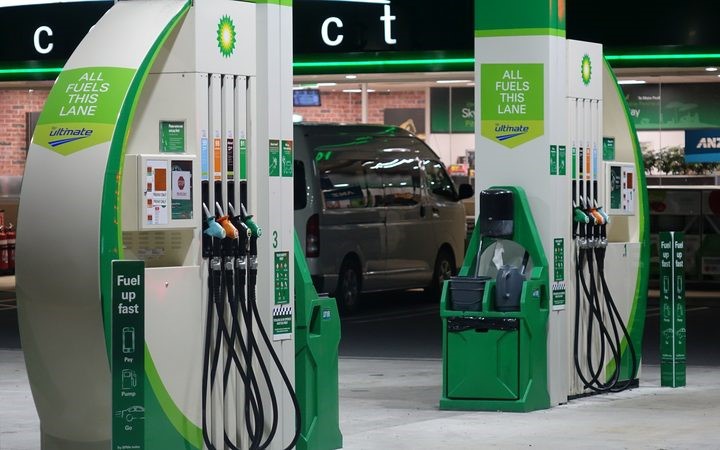Matthew Theunissen, Reporter
Despite Aucklanders paying 11.5 cents extra in fuel tax at the pump for almost a year, they're still being charged much less than many other parts of the country.

Photo: RNZ / Jonathan Mitchell
The average price of fuel is higher in all regions of the South Island; it's been pricier in Wellington all week, and also in Whangarei - despite the refinery being just next door.
Petrol price watchdog Gaspy said it appeared to be a case of fuel companies charging whatever they think they can get away with.
Spokesman Larry Green said while many Aucklanders were far from happy when the Regional Fuel Tax kicked in last June, it now appeared motorists from other parts of the country should be the ones feeling aggrieved.
"The whole idea of the fuel tax was that the people who use that particular motorway infrastructure or transport infrastructure are going to have to pay more.
"For instance, Southland's not building a giant motorway, neither is Taranaki, Otago. They don't have giant motorway problems."
While it was understandable that transporting fuel to remote parts of New Zealand meant charging more, Mr Green said he couldn't see any reason why fuel cost more in Wellington than Auckland.
"Wellington - which is which is a capital city, which has a port next door to it - from some of the major downtown fuel stations you can look across and see the petrol being pumped into the tanks and yet it's still more expensive and it has no fuel tax.
"It's very hard to make a non-cynical judgement on why things should be more expensive. It really seems to be a case of what you can get away with in that market."
As of yesterday afternoon, Gaspy calculated the average price of 91 in Auckland to be $2.25 a litre; $2.29 in Wellington; $2.30 in Otago and $2.32 in Canterbury.
The West Coast was the most expensive place in mainland New Zealand, averaging $2.35. Taranaki and Bay of Plenty were the cheapest at $2.11.
Automobile Association petrol spokesman Mark Stockdale said the main factors in determining petrol prices were a location's proximity to a port and whether it's near a large population centre.
"It's an economy-of-scale function so the more fuel that you sell at each site, that means you're able to spread your overheads, particularly your fixed overheads like the cost of employing staff and the rates or the rent or whatever it is.
"That means the margin is lower than you might get at service stations in the less densely-populated areas."
In Auckland's case, it cost very little to get fuel to the city because of the pipeline from Whangarei to Wiri, while its population density meant petrol stations could still offer cheaper prices than elsewhere.
"Prior to the introduction of the Auckland Regional Fuel Tax, Auckland's fuel prices were amongst the lowest in the country," Mr Stockdale said.
"Now that has changed. After the introduction of fuel tax the prices on average have gone up. They still have low prices but they're not the lowest in the country."
The government has directed the Commerce Commission to carry out an investigation into the petrol industry, which is expected to be released by the end of the year.



 Binoy Kampmark: Commemorating Mummy - Reflections On Mother’s Day
Binoy Kampmark: Commemorating Mummy - Reflections On Mother’s Day Gordon Campbell: On The New Pope, And The Israeli Attack On Peter Davis
Gordon Campbell: On The New Pope, And The Israeli Attack On Peter Davis Martin LeFevre - Meditations: For The Love Of Sycamores
Martin LeFevre - Meditations: For The Love Of Sycamores Ian Powell: A Timely Call For A Social Contract In Health
Ian Powell: A Timely Call For A Social Contract In Health Binoy Kampmark: Bratty Royal - Prince Harry And Bespoke Security Protection
Binoy Kampmark: Bratty Royal - Prince Harry And Bespoke Security Protection Keith Rankin: Make Deficits Great Again - Maintaining A Pragmatic Balance
Keith Rankin: Make Deficits Great Again - Maintaining A Pragmatic Balance